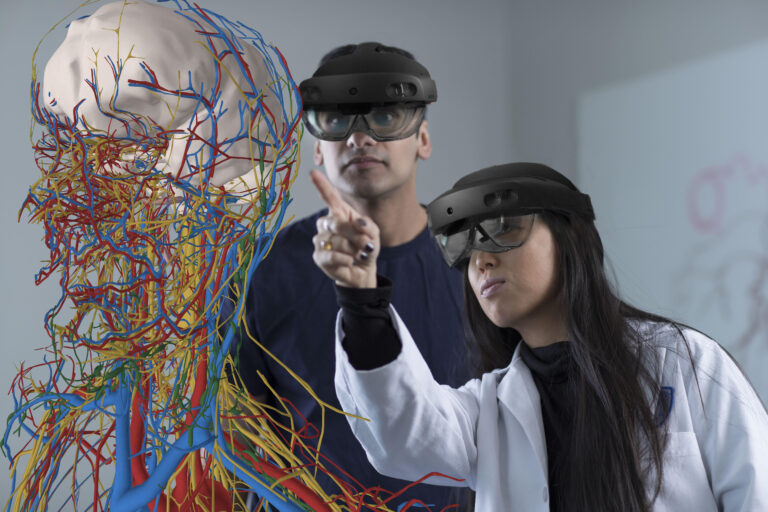Startup to accelerate and scale adoption of pioneering HoloAnatomy software to transform the way students learn human anatomy
Case Western Reserve University developed the HoloAnatomy® Software Suite to teach human anatomy in a more intuitive, cost-effective way using holographic imagery. Building on its long history of bringing influential research into the public domain, CWRU has announced the launch of Ilumis Inc. to accelerate product innovation, improve partner service and rapidly scale the potential of this revolutionary learning platform.
“Ilumis was formed as the exclusive licensee to help extend these applications to students around the world,” said Mark Griswold, professor at CWRU School of Medicine and faculty director at the university’s Interactive Commons, a center dedicated to applying interdisciplinary collaboration and visualization to advance research and education. “We’re proud to have successfully developed this package over the past eight years, and excited to witness this next phase of adoption. We believe the HoloAnatomy suite will forever change the way students learn the fundamentals of human anatomy.”
Developed by programmers and 3D artists at the Interactive Commons, along with CWRU anatomy faculty, the HoloAnatomy Software Suite uses advanced mixed-reality technology to illuminate the human body in three dimensions through the Microsoft HoloLens headset. Based on more than a dozen pilot studies, medical students learned anatomical content twice as fast compared to cadaver dissection, retaining information 44% better when tested eight months later.
“The HoloAnatomy Suite represents the future of medical education,” said Ilumis CEO Mark Day, who brings a wealth of experience leading the global Microsoft HoloLens business—a mixed-reality headset that allows users to view holograms together. “Now universities can reduce the expensive, time-consuming task of obtaining cadavers, and students can enter a world of new possibilities where they learn faster, retain more vital information, and transcend the classroom with unprecedented collaborative potential.”
“The strength of the HoloLens and HoloAnatomy Software is that they produce beautiful, exquisitely detailed, immersive visuals. When you are using it, you integrate yourself in this mixed reality world. The beauty of this product is the ability to work collaboratively with your colleagues and professor in a large group, in-person and remotely. It enables you to take the anatomy from textbooks to something much more visual, 3D, and life-like. It seems to ingrain itself in the student’s brain, and they will remember it for years to come.”
—Tom Cosker, former director of human anatomy at University of Oxford
Expanding the platform, CWRU recently developed the HoloAnatomy Neuro Software Suite, the first mixed-reality, interactive holographic experience to teach neuroanatomy. The platform goes beyond the brain and nervous-system structures visible in dissection to illuminate anatomical and abstract concepts related to the body’s command center.
The HoloAnatomy Software Suite is already in use by more than 370 CWRU medical students and is licensed to a rapidly expanding network of more than 18 institutions—including Northwestern and Texas Christian University—that use the HoloAnatomy platform to attract tech-savvy students, entice donors, save budgets for more pressing expenditures, and provide a more engaging, effective educational experience.
CWRU owns the technology rights to HoloAnatomy software, and is the majority owner of Ilumis in a 20-year licensing agreement.
For more information, contact Bill Lubinger at william.lubinger@case.edu.
This article was originally published Jan. 17, 2023.


